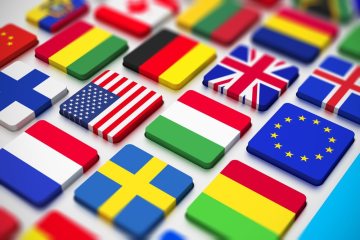Registrable Trademarks
All signs fulfilling the requirements of states party to the Madrid Agreement or to the Protocol designated by the applicant are registrable as international trademarks.
Who May Apply for an International Trademark
Any natural or legal person who is a citizen of, or resident in, states party to the Agreement or to the Protocol, or who has a real and effective industrial or commercial establishment in one of those states may apply for an International trademark.
The Trademark Application
The application for an International trademark registration must be based on a corresponding prior national trademark application or registration, or on a corresponding prior application or registration for a European Union trademark.
Priority
It is possible to claim the Convention priority of a prior national application or of a prior European Union trademark application, within 6 months of the application date.
Where to File the Application
International trademark applications must be filed with the national patent and trademark office where the corresponding national trademark was filed or registered or with the European Union Intellectual Property Office (EUIPO) if the corresponding application or registration is for a European Union trademark. The national office or EUIPO will then forward the application to the World Intellectual Property Organization (WIPO) in Geneva, Switzerland.
Classification of Goods and Services
The international classification applies. An application may include goods and services belonging to more than one class of the above classification.
Official Languages
Official languages to be used in the application are French, English and Spanish.
Member States
The list of member states of The Madrid Agreement and Protocol Concerning the International Registration of Marks can be downloaded from the WIPO web site.
Designation of States
The designation of states in which trademark protection is sought must be indicated in the application. An International registration may later be extended to other member states of the Madrid Agreement and/or of the Protocol.
Rights Conferred by the International Registration
An International trademark registration, as far as protection is concerned, is equivalent to a national trademark registration in each of the designated states. In said states, the validity of the trademark is governed by national laws.
Examination and Opposition
Each member state, if national law so provides, generally within 12 or 18 months of notification of the International registration, may inform the WIPO of its refusal to grant the trademark registration in its own territory, either for lack of conformity to national laws or because of the existence of prior third party rights. If national law so provides, holders of prior rights may bring opposition proceedings against the grant of the International trademark in the national territory. After a refusal is issued, the owner of the International trademark may act to overcome the reasons for which the registration has been refused in that state.
Duration and Renewals
International trademarks are valid for 10 years following the date of registration. Renewals are possible for subsequent 10-year periods.
Assignment
Assignment of International trademarks is permitted only to natural or legal persons entitled to apply for an International trademark.
Licensing
Licensing of International trademarks to third parties is permitted for all or some of the designated states and for all or a portion of the goods and/or services.
Applicable International Agreements
The Madrid Agreement and Protocol Concerning the International Registration of Marks, the Paris Convention, the Nice Agreement Concerning the International Classification of Goods and Services for the Purposes of the Registration of Marks.

